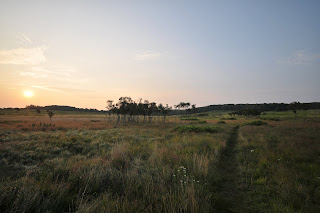Next time you go on vacation, but you still want to take great photographs without all the excess weight, you can pack light. No need to carry every lens plus the kitchen sink. I've chosen equipment based on weight, portability, the ability to capture a wide range of images and technology to still communicate.
- Camera - The biggest decision is if you want to carry a DSLR or a compact point and shout. I usually don't mind the extra weight of a DSLR, so I carry my Nikon D300s 12 megapixel. It has two memory slots for extended shooting, the ability for interchanging lenses and shots HD video, which I love. Ask yourself if you wouldn't mind carrying around a heavy DSLR with lenses and all the accessories. There are some excellent compact cameras that give even the discerning shooter the flexibility to shoot all sorts of images.
- Lenses - If you pick the DSLR, you need to decide which lenses to take with you especially if you haven't been somewhere before. I would recommend a lens or a few lenses to cover a wide range of focal lengths.
· Nikon
makes a few really great lenses that are perfect for travel. The first lens is
a 28-300 focal length, with fast focusing and image stabilization which is
perfect for those boating trips. This lens could be the only one you
really need for your trip, covering everything from wide angle landscapes to
portraits.
· If you
prefer the extra weight and take advanced photos, I recommend what I always
carry is a 10-20 mm lens from Sigma for those really wide shots, a 24-70mmf/2.8 that is perfect for landscapes and really low light shots, and a 70-200mmf/2.8. It's very large but an incredible lens for those portrait shots
with really amazing backgrounds.
- Camera Batteries and Charger - Don't forget at least one extra battery and the charger. No need to miss out on something great because of a dead battery.
- Hot-shoe flash and batteries - Pack a small one to use for fill flash or extra light during night time shoots. The Nikon SB-700 is a perfect high performance flash with remote flexibility for off camera flash capability. You could even opt for the SB-400 which is far cheaper, but you loose some power and functionality.
- Memory Cards - Make sure you have plenty. They are lightweight, relatively inexpensive, just make sure you have a place to put them so you can find them easily.
· I have one
32GB compact flash card in the first slot to shoot photos and a 16 GB SD card
in the second slot for shooting video or extra space for photos. Along
with that I bring two extra 16 gig cards. Not that I will ever need that
much space since l'm judicious with what I shoot and do heavy editing, but it's
nice to have in case you want to shoot and edit when you get home. On another
note, out now is wireless SD cards called Eye-Fi, that you can use to transfer
JPG's to your IPAD for larger viewing and uploading to a website.
- IPAD or Tablet - To communicate on the road take along an IPAD or other wi-fi enabled tablet to cut down on weight instead of a computer. You can use it to send emails, view images, surf the web, read a book or upload images. And if it's connected to a phone network like ATT or Verizon, you can do that even in the middle of nowhere.
- A camera bag - Now you need something to carry everything with you. I like the Tamrac Evolution 8 bag. It can be worn as a backpack or a sling bag both sides for left or right handed easy access and weighs about 4.5 lbs empty. It has loads of pockets for storage and a large pocket that is perfect for an IPAD or smaller computer.
- Last but not least, don't forget all the small items that you'll need like a water, snacks, lens cloth, cables, medicine, rain coat, etc. All the things to make your traveling a little easier.


